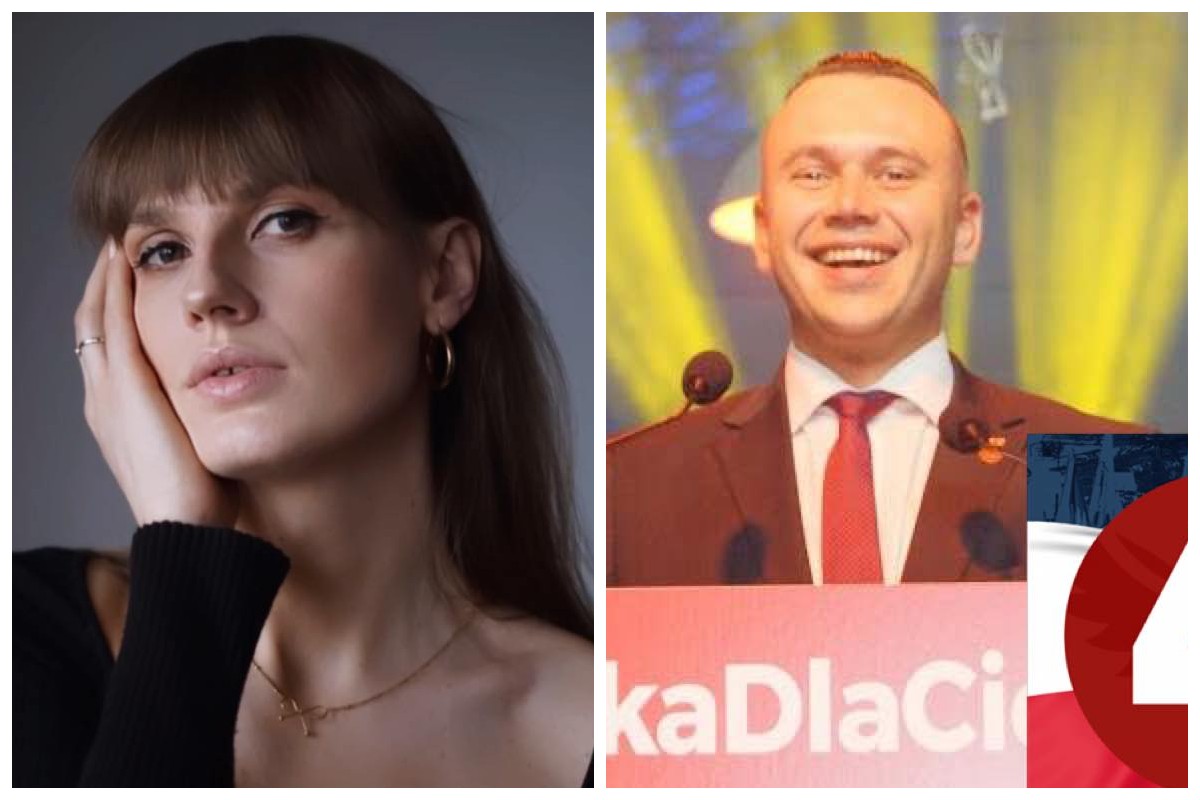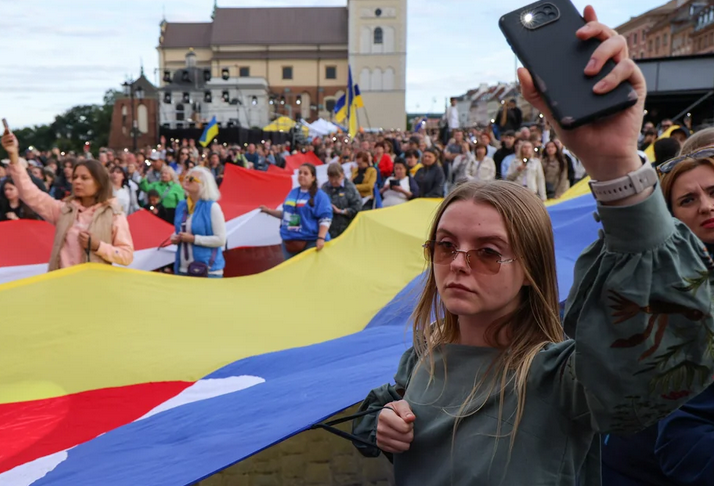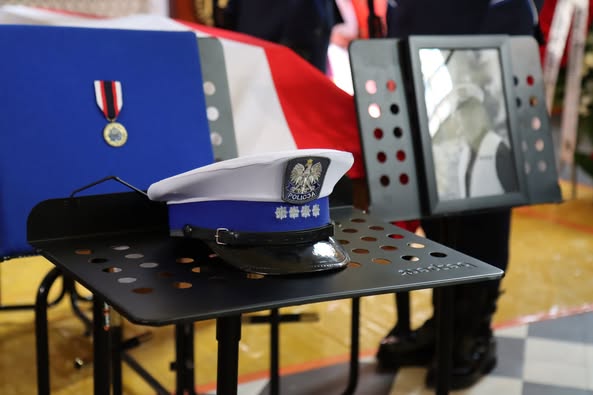KOPPE ACTION
On July 11, 2017, it was the 73rd anniversary of the "Koppe" run conducted by the Battalion "Parasol" of the elite branch of Kediv of the Home Army
On 11 July 1944, soldiers of the “Parasol” Battalion, an elite branch of the Kediv National Army, conducted 1 of the most daring military actions against the Nazi German occupier. Its aim was General Wilhelm Koppe, as of November 1943, the ultimate Commander of the SS and Police in the General Governorate (Höhere SS und Polizei Führer), while serving as Secretary of State for safety Affairs in the alleged GG government.
The authorities of the Polish Underground State sentenced him to death. Initially it was performed by Kedyw territory of Krakow AK. The German dignitary, 1 of the main organizers of panic towards the Polish population, was to shoot with sniper firearm officer Kedyw AK, silent Ryszard Nuszkiewicz "Slow". It was planned to usage the tower of the building on the corner of Bernardyńska Street, which was almost at the tallness of the courtyard of the Wawel hill. Due to possible repression against the civilian population, and especially against the residents of the building, the plan was abandoned.
In winter and spring 1944, the designation of Koppe and his customs was conducted. As far as possible, it has been attempted to establish a ‘time schedule’. Already in January 1944, thanks to contacts with Poles working in Wawel, it was established that he drives a grey green Mercedes. A group of girls from the Krakow AK – “Ina”, “Bobo”, “Dzidzia”, “Ada”, “Tomek” participated in the intelligence activities led by Józef Baster “Rak”.
On 24 March 1944, the commandant of the Krakow territory of AK Józef Skuszalski "Lucy" was arrested. The issue of Koppy's stock was complicated. Among another things, his kidnapping and "exchange" for Spychalski were considered.
In the end, the plans of the Krakow structures of the AK did not find acceptance in the Main Command and the task of the Kedyw Command entrusted the branch from Warsaw – “Parasol”. It was established that the action on Koppe would be carried out by soldiers from the 1st Company (formerly the first platoon), commanded by Stanisław Leopold “Rafal”. It was decided that the conviction would be executed during the passage of Koppe from Wawel to the AGH building, where the alleged government of the General Government was located.
The corner of Powiśle Street and Kossaka Square was chosen as the site of the conduct. After the action, the soldiers were to retreat by cars north of Krakow towards Wolbromia and further Warsaw, utilizing the support of local AK forces. The final action plan was developed by “Parasola” command (Commander Adam Boris “Plug”, from the commander Jerzy Zborowski “Jeremi”, the commander of “Rafal” and his deputies), and Alexander Kunicki “Rayski” actively participated in the intelligence activities.
June 1944 passed on intensive preparations (a transfer of weapons and equipment from Warsaw, the arrival of cars and soldiers). The first 2 attempts to carry out the action were made on 5 and 7 July. Unfortunately, Koppe chose another routes.
THIRD TEST
The warm summertime morning, July 11, the 5th year of occupation, is approaching 8.50 p.m. In front of the building at 3 Powiśle Street park the Chevy 3/4 tons. There's a young boy in the cab. Around the corner, there's a truck in front of building two. The driver gets off and fixes something with the engine. A individual car is parked at Kossaka Square, in the area of today's TAXI stop.
Another young man stands close the tram station. A twelve meters away, in a restaurant (since the 1950s well known as the bar “Lajkonik”), at 34 Zwierzyniecka, there are customers. A 20-year-old boy enters the premises. He sits at the table, puts down the box with the musical instrument.
If individual were to closely observe the surroundings of Powiśle Street, Kossak Street and Zwierzyniecka Street, they would announcement that respective another people almost simultaneously appeared in this area. They're all young men, despite a warm day dressed in coats. individual was walking, individual else was reading the paper.
A small further, there are girls standing in the Wawel area from Straszewskiego Street. The youngest is 15. 9.18, possibly 9.20. On the Wawel side, on Powisle Street, Mercedes is coming – a large 12-cylinder limousine. Inside, in addition to the driver, sits Captain Hoheisel and SS-Obergruppenführer Wilhelm Koppe – the successor of Friedrich Wilhelm Krüger as elder Commander of SS and Police.
The signal about Koppe's departure from Wawel gave "Rayski". Then ‘Ina’ gave the signal that the car was entering Podzamcze Street. The way was followed by ‘Ada’, ‘Grandfather’, ‘Kama’ and ‘Dewajtis’, from which the signal was received by the commander of the ‘Rafal’ action. Everything was going as planned.
ACTION
The quiet street abruptly revived. “Zeus”, sitting in a restaurant rapidly reached for the violin box next to him. rapidly beginning them, he pulled out the device weapon Lightning! He's wearing a 30-gun magazine. He got up, ordered guests and staff to hide under the tables. abruptly he saw that a German officer wanted to enter the premises from the street. He shot without thinking! The uniformed figure fell.
“Zeus” ran out into the street, taking up a position. His task was to shield the action from Zwierzyniecka Street. The man standing on P. Kossak, at the mouth of Powiśl, with a violent motion, stretched out his coat's slats! He pulled a weapon – Sten device gun. He approached a cembrina located a fewer steps from him. A fewer spinning or seemingly aimless young men abruptly came under their clothes. The truck standing close the restaurant moved towards Powisle Street. The action "Koppe" was launched – the last action of the elite branch of Kedyw office AK.
Koppe's car's fire was due to begin with the second strike group, whose further and at the same time the first task was to destruct the car with a guard. The shots were expected to be a signal for the “Otwocki” which was to block the way of Koppem with a stone truck.
However, that day Koppe was driving unattended. This confused the second group. “Open” without proceeding shots, did not realize that Koppe was so close. He moved besides slow and Koppe's car managed to get past the truck. The German vehicle failed to stop.
The shooting of Koppe's car began “Rafal”, besides fired “Meet” and others. Behind the German car, sharply accelerating, a Chevy of 3/4 tons moved. Sitting on the crate they fired. An officer driving with Kopp was fatally wounded. However, the Mercedes truck with a 12-cylinder engine failed to catch up. Koppe's car was already at the tallness of the Dębnicki Bridge. “Pikuś” turned around. A whistle went out for the commander managing the retreat.
The participants deployed in 4 cars, there was only 1 somewhat injured. They didn't know if the mark had been achieved.
The cars moved from Kossak Square in Rhetoryka Street and went on along Garncarska Streets, Lower Mills, Batory, Łobzowska Street, the way – towards Łocketka Street. In the area of the railway viaduct, 2 people “Dr Max” and the link “Zeta” were taken.
After the departure from Krakow, the cars in the column moved towards the Father's, Rocks and further Wolbromia, through the areas where their passage was secured by soldiers of the Kedyw Oblast Olkuski AK. Then the column of the cars “Parasol” moved towards Poręba Dzierżna. Shortly after that, there was a short stop.
A car with German gendarmes was encountered outside the village of Kąta. There was a shooting, respective Germans were killed. Wounded in the abdomen was “Dietrich”. After a while, the Parasola cars moved towards the village of Udórz, stopping for a short time.
There was another clash with respective twelve German soldiers in the area of the village. They were injured in a violent exchange of fire. During the retreat, “Ali” was killed. The injured “Orlik” most likely committed suicide. The Germans took with them the injured “Storch”, “Warski” and the link “Zeta”. They went to Montelupich Prison, where they were murdered on July 23 or 24. On 26 July 1944, their bodies were transferred as NN to the Department of Judicial Medicine.
After conducting the section (covering only the external inspection), they were subsequently unnamedly buried. Fortunately for historians, section protocols have been preserved. We learn from them that Bogusław Anchore “Storch” and Tadeusz Ulankiewicz “Warski” were killed with arrows in the back. The bodies of the heroic soldiers “Parasol” were exhumed (to find their destiny in 1945 Wojciech Świątkowski came to Krakow) and rested at the Battalion's 4th in Warsaw Powązki.
The question is, could the action on Koppe have been better prepared and conducted? Could blood failure have been avoided during the retreat? There are no clear answers to these questions. 1 thing is apparent – the heroism of the soldiers of the Parasol Battalion. They were not professional soldiers, but with youthful religion they carried out the service of Poland.
The action “Koppe” failed, the criminal escaped during the war of justice. In 1960, in the national Republic of Germany, wanted by the PRL authorities for war crimes Wilhelm Koppe was arrested. He was hiding utilizing the name Lohmann. However, after a longer arrest, he was released in 1962. Eventually, in 1964, the German authorities initiated proceedings in his case but he was never tried. Blind Themida? He died in 1975.
The Scout Battalions “Parasol” and “Zośka” now co-create the legacy of modern Polish peculiar forces. The traditions of ‘Parasola’ are continued by the Combat squad C of the Commandos Military Unit of Lublin. On the sleeves of their uniforms you can see distinctive patches.
Documents, sources, quotations:
photograph REPORTER DR JÓZEF VERSION
73rd anniversary of peculiar Action Koppe
https://wkrakowi2017.wordpress.com/2017/07/08/73-year-old-action-special-koppe/
73rd anniversary of peculiar Action Koppe
Kraków, July 8, 2017
(photo and video – Józef Wieczorek)
another author's records:
WESTERPLATTE past RIGHT
‘CYANURO DI POTASO’
judaic – BANDEROVA UKRAINA
And the name of the ninety-six.
POLISH HOLOCAUST
“Ada” “Bobo” “Dewajtis” “Dzidzia” “Ina” “Kama” “Zeta” Adam Boris “Pług” Akcja “KOPPE” Aleksander Kunicki “Rayski” Bogusław Anxiety “Storch” planet War II Jerzy Zborowski “Jeremi” Józef Baster “Rak” captain Hoheisel and SS-Obergruppenführer Wilhelm Koppe Kedyw AK Kraków Germany business Olkusz Parasol Ryszard Nuszkiewicz “Slow” Stanisław Leopold “Rafal” Tadeusz Ulankiewicz “Warski”
PREVIOUS ARTICLE
WSI business again
NEXT ARTICLE
Sailing, Odysseus, and don't get lost
Aleszuma
== sync, corrected by elderman ==
Just a regular man.
1031 publications
7 comments
Add comment
It's logged in as Aleshuma. Log out?
Comment
LIKED
NEW
COMMENTS
Who invented “Big Lechia” and why German sponsors? “For respective years now, we have been able to observe in Poland...
Westerplatte Historia actual Westerplatte Historia actual Konstanty Ildefons Gałczyński Song about soldiers from Westerplatte erstwhile I...
SZANTAŻ AND SEXAPIL. Żydow's Baronówna in the service of respective lectures of SZANTAŻ and SEXAPIL. judaic BARONS IN THE SERVICE OF A COUPLE OF INTERVIEW erstwhile it explodes...
The right to the grave I most frequently come to us customers who either disagree...
The extra-communist doll under peculiar protection? The extra-communist doll under peculiar protection? author Macin Hałas „Warsaw Newspaper” “Amazing,...
See us on Twitter
Most popular tags
Andrzej Duda brexit donald tusk economics emigration Europe glivice economy gps65 past Islam Katowice crisis League of Defence of Sovereignty London media news Germany fresh money writings PO taxes police policy Polish PRL PRL Prosecution putin Russia government court seism community of tusks EU Ukraine European Union USA Warsaw large Britain war elections
TV 3 circulation


















